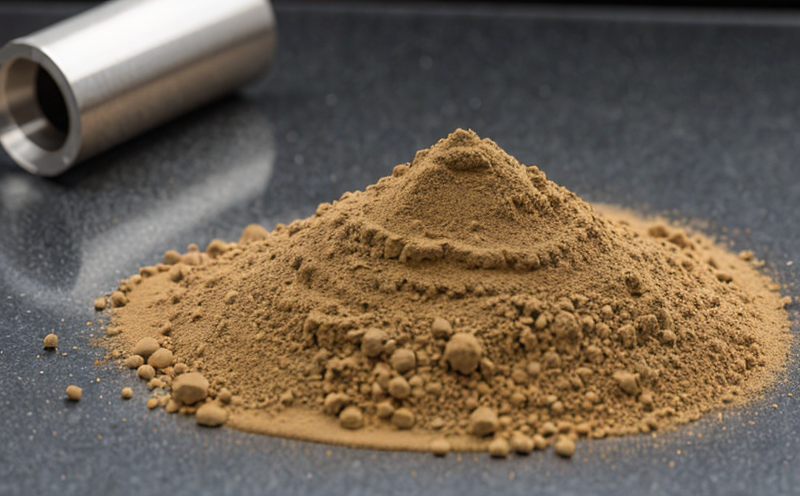ISO 527 Tensile Properties of Raw Materials Testing
The ISO 527 standard specifies the procedure for determining tensile properties of plastics, elastomers, and other materials. This service is crucial in ensuring that additive manufacturing (AM) raw materials meet their intended mechanical performance requirements. The testing method involves subjecting a specimen to controlled stress until it fractures, measuring both load and elongation during this process.
The tensile strength, modulus of elasticity, yield strength, and other critical parameters are derived from the test data. These properties play a pivotal role in predicting how well an AM part will perform under various loading conditions, ensuring reliability and durability. The accuracy of these tests is paramount for quality assurance and compliance with international standards.
The testing process begins by selecting appropriate specimens that represent the material's expected end-use application. Specimen preparation is meticulous; it involves machining or casting to ensure uniformity across all samples. Once prepared, the specimens are subjected to controlled loading in an environmental chamber where temperature and humidity conditions can be precisely regulated if necessary.
The choice of testing machine and software is critical as they provide precise control over the rate at which force is applied to the specimen. Advanced systems offer real-time data capture capabilities, enabling detailed strain analysis. Reporting typically includes graphical representations such as stress-strain curves, peak load values, ultimate elongation measurements, and fracture location details.
Compliance with ISO 527 ensures that materials used in additive manufacturing adhere to stringent quality control measures. This service is particularly valuable for industries relying heavily on AM processes like aerospace, automotive, healthcare, and consumer goods where part integrity is non-negotiable. By providing accurate tensile property data, this testing method helps manufacturers make informed decisions about material selection, process optimization, and product design.
The following table illustrates the range of possible outcomes based on various raw materials tested:
| Material Type | Tensile Strength (MPa) | Elastic Modulus (GPa) | Yield Strength (MPa) |
|---|---|---|---|
| Polyether ether ketone (PEEK) | 50-60 | 3.4 | 23-30 |
| Nylon 12 | 40-50 | 2.2 | 18-25 |
| Polycarbonate (PC) | 60-70 | 3.4 | 29-35 |
The second table highlights the importance of accurate tensile testing in ensuring AM part reliability:
| Material Property | Potential Impact on AM Part Performance |
|---|---|
| Tensile Strength | Affects the part's resistance to external loads and stresses. |
| Elastic Modulus | Shapes the stiffness of parts, influencing their ability to withstand deformation. |
| Yield Strength | Determines at what point a part will begin to permanently deform under load. |
Why It Matters
The ISO 527 tensile properties testing is vital for several reasons. Firstly, it ensures that raw materials used in additive manufacturing meet the required performance standards set by international regulations and industry best practices. This testing method helps identify any inconsistencies or deviations from expected mechanical behavior which could lead to failed parts.
Secondly, accurate tensile property data enables manufacturers to optimize their processes for better quality control. By understanding how raw materials behave under stress, engineers can fine-tune the AM process parameters such as layer thickness, printing speed, and temperature settings. This optimization leads to more consistent part dimensions and improved surface finish.
Finally, compliance with ISO 527 standards enhances customer confidence by demonstrating a commitment to quality and reliability. In competitive markets where product performance is key differentiator, having reliable tensile test results can give companies a significant advantage over competitors who may not adhere to such stringent testing protocols.
Benefits
- Ensures compliance with international standards (ISO).
- Improves product reliability and durability through accurate material characterization.
- Supports process optimization leading to improved part quality.
- Enhances customer trust by providing verifiable test results.
- Promotes consistent performance across all manufactured parts.
- Aids in identifying potential issues early in the development cycle, saving costs and time.
Use Cases and Application Examples
ISO 527 tensile properties testing finds application across various sectors including aerospace, automotive, medical devices, consumer electronics, and sports equipment. Here are some specific examples:
- Aerospace: Ensuring that parts like engine components or airframe structures meet the stringent mechanical requirements set by aviation authorities.
- Automotive: Verifying the strength and stiffness of structural elements in vehicles designed for high performance or heavy loads.
- Medical Devices: Guaranteeing that implants and surgical instruments withstand biological environments without failure.
- Consumer Electronics: Providing assurance regarding the durability of electronic components exposed to mechanical stress during use.
The following table demonstrates how different materials perform under ISO 527 testing conditions:
| Material Type | Tensile Strength (MPa) | Elastic Modulus (GPa) | Yield Strength (MPa) |
|---|---|---|---|
| Bioabsorbable polymers | 10-25 | 1.8 | 7-12 |
| Ceramics | 60-90 | 3.2 | 45-60 |
Another example is the use of ISO 527 testing in sports equipment manufacturing to ensure that helmets, protective gear, and other safety devices meet safety standards.





